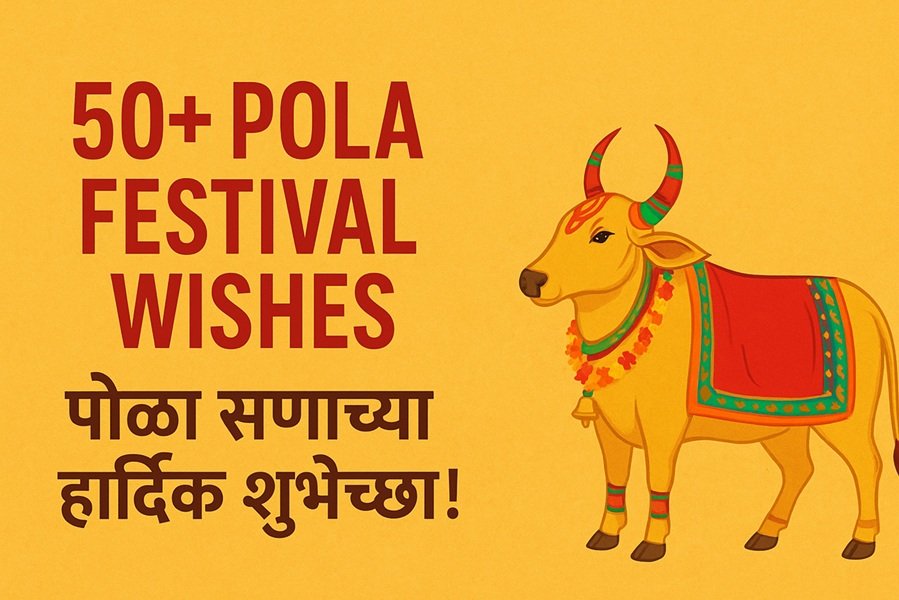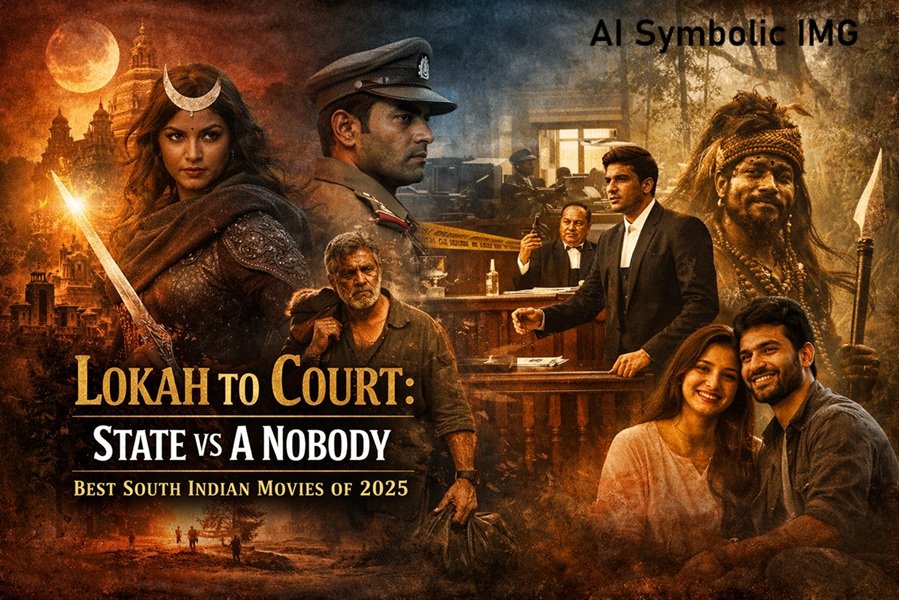
India is a land of diverse festivals that honor not just gods and ancestors but also animals that contribute to human life. One such unique festival is Pola, a traditional agrarian celebration observed mainly in Maharashtra, Madhya Pradesh, Chhattisgarh, and parts of Telangana. This festival is dedicated to bulls and oxen, who play a vital role in agriculture. Farmers decorate, worship, and rest their bullocks on this day as a mark of gratitude.
In 2025, Pola Festival will be celebrated on Saturday, August 23, 2025.
Read This: 50+ Pola Festival Wishes in Marathi and English
Bail Pola Festival 2025: Date and Tithi
- Festival Name: Pola Festival
- Date: Saturday, August 23, 2025
- Month: Shravan Amavasya (New Moon day in Shravan month, according to Hindu calendar)
- Observed in: Maharashtra, Madhya Pradesh, Chhattisgarh, Telangana, parts of Northern Karnataka
The festival usually coincides with Shravan Amavasya, which comes after the monsoon sowing season.
Why is Pola Festival Celebrated?
The bullocks (oxen) are considered the backbone of traditional farming. Before tractors and machines, bulls were essential for ploughing fields, transporting goods, and assisting in agricultural labor. Farmers dedicate a special day to worship them, acknowledging their hard work and role in sustaining livelihoods.
Pola represents:
- Gratitude to nature and animals
- Harmony between humans and livestock
- Respect for rural traditions and agrarian lifestyle
Rituals and Celebrations of Pola
1. Preparation
- A few days before Pola, farmers bathe and clean their bulls.
- Horns are polished and painted in bright colors like red, green, and yellow.
- Decorative ornaments such as bells, embroidered shawls, and garlands are prepared.
2. On Pola Day
- The day begins with an oil bath for the bulls.
- Bulls are adorned with colorful ornaments, anklets, and cloth coverings.
- Horns are decorated with brass or silver caps.
- A ceremonial tilak of kumkum and turmeric is applied.
- Special puja is performed, offering sweets, jaggery, and gram.
- Bulls are paraded in the village streets to the beats of drums and folk songs.
3. Evening Processions
- Villagers gather in a festive procession where decorated bulls are displayed.
- Some regions organize competitions to showcase the best-decorated bull.
- Traditional folk dances and music accompany the celebrations.
4. Naand Pola (Young Bulls’ Pola)
- A day before the main festival, children celebrate Naand Pola by decorating wooden or clay models of bulls.
- These models are worshipped and paraded, symbolizing the importance of agriculture for the next generation.
Regional Variations
- Maharashtra: Considered the heartland of Pola, villages see grand processions of bulls and cultural programs.
- Madhya Pradesh & Chhattisgarh: Farmers also worship ploughs and tools along with bulls.
- Telangana: Similar traditions are followed, and in some areas, farmers also worship cows alongside bulls.
Foods Prepared During Pola
Like every Indian festival, food is an important part of Pola celebrations. Families prepare traditional delicacies such as:
- Puran Poli – a sweet flatbread stuffed with jaggery and lentils.
- Kheer (Rice pudding).
- Bajra roti with jaggery.
- Various local sweets offered to deities and bulls before being shared among families.
Cultural and Spiritual Significance
- Symbol of Gratitude – It highlights India’s tradition of thanking animals and nature for their contributions.
- Community Bonding – Villagers come together, share food, and celebrate agricultural life.
- Teaching Next Generations – Children participate in Naand Pola, learning to respect animals and agriculture.
- Eco-friendly Festival – Unlike modern celebrations, Pola is deeply rooted in sustainable traditions.
Pola in Modern Times
With the rise of mechanized farming, tractors and machines have replaced bullocks in many areas. However, Pola continues to be celebrated as a cultural and spiritual festival. Even urban families with agricultural roots celebrate it symbolically, ensuring that the tradition stays alive.
Conclusion
The Pola Festival 2025 will be observed on Saturday, August 23, 2025, across Maharashtra, Madhya Pradesh, Chhattisgarh, and Telangana. This day is a reminder of the deep connection between humans, animals, and agriculture. By worshipping bulls, farmers express gratitude for their invaluable role in sustaining life and farming.
Pola is not just a festival—it is a celebration of nature’s harmony, respect for animals, and acknowledgment of rural culture. In today’s fast-paced mechanized world, such traditions remind us of the importance of sustainability and gratitude.




